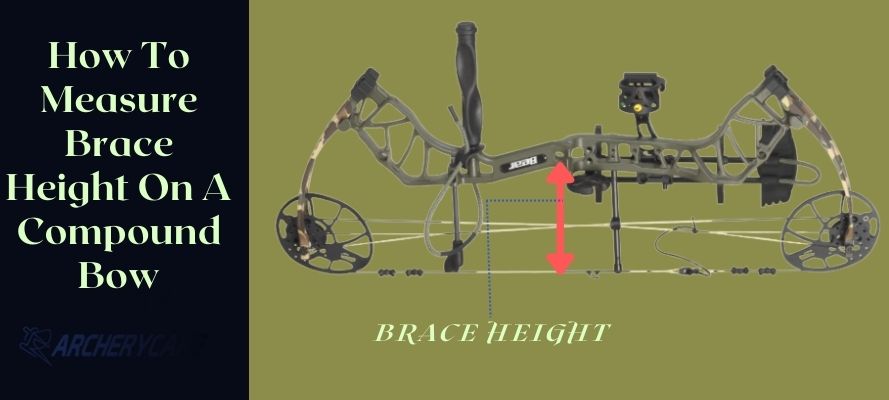Before the invention of guns, hunters and warriors used bows and arrows. Since then, archery has advanced in leaps and bounds. From the simple self-bows of old times, today we have highly effective compound bows.
Over the centuries, archers have learned that an arrow's speed and accuracy is affected by several factors, including brace height. Hence, modern bows such as compound bows have an adjustable brace height.
Depending on what you want to do with your bow, it is important to know how to measure brace height on a compound bow, and how it affects an arrow’s flight.
Table of Contents
Compound Bow Brace Height Measuring Procedure
What is brace height on a compound bow? It is the distance measured from the deepest point of the grip to the undrawn bowstring.
Though you can use a variety of rulers to measure brace height, the bow square is the best suited for a compound bow.
1. Align the bow
The compound bow must be in a resting position to measure the bow height. This means that the bowstring should remain undrawn.
The upright position is the best position to put the bow in when measuring brace height. Most compound bows have a foldable stand, so it should be easy to stand them upright.
2. Put the bow square in position
To get the correct compound bow brace height, you should measure the length from the pivot point to the string. There are two ways to align a bow square to make measurements;
(a) Attach the head of the bow square to the bowstring
The head of the bow square has a couple of clippers. Use these clippers to attach the square to the bowstring so that the ruler part rests in a position perpendicular to the string. Ensure the ruler part lies above the Berger hole in the riser.
(b) Press the head to the pivot point
In this arrangement, put the bow square’s head on the grip hold so that the ruler part extends toward the bowstring. However, be careful because if the bow square slants, it will result in an inaccurate measurement.
3. Measure the brace height
Once the bow square is in position, all you have to do is record the measurement. If you used step (a) to align your bow square, the Berger hole coincides with the pivot point. The value that aligns with the position of the Berger hole is the bow brace height.
If you used step (b), the brace height would be where the bowstring intersects the ruler.
How Does Brace Height Affect Arrow Flight On A Compound Bow?
Brace height affects arrow flight in two main ways: speed and accuracy.
Speed
When you shoot an arrow from a compound bow, it is propelled forward by the bowstring. Arrows stay in contact with the string longer at shorter brace heights than at higher brace heights.
The greater the amount of time an arrow spends in contact with the string, the more energy it absorbs and the faster it travels. Hence, shorter brace heights shoot faster arrows while higher brace heights shoot slower arrows.
Accuracy
Although many factors affect the accuracy of an arrow, including form and technique, brace height is a major one. ‘Forgiveness’ is the term archers use to describe the corrective effect of a bow on an arrow’s flight path.
The relationship between bow brace height and accuracy dictates that bow forgiveness increases with higher brace height. With higher brace heights, there is less time and opportunity for the occurrence of errors since the arrow stays in contact with the string for a shorter period.
Though most manufacturers use the recurve bow brace height chart to preset compound bows, you’re free to customize and find the balance between accuracy and speed according to your needs.
Conclusion
You don’t need a brace height calculator to customize a compound bow. Instead, measure the brace height and use a brace height chart to find the best height.
Relevant Posts You Can Also Read:

